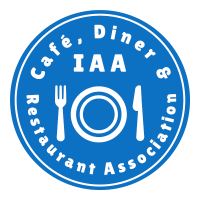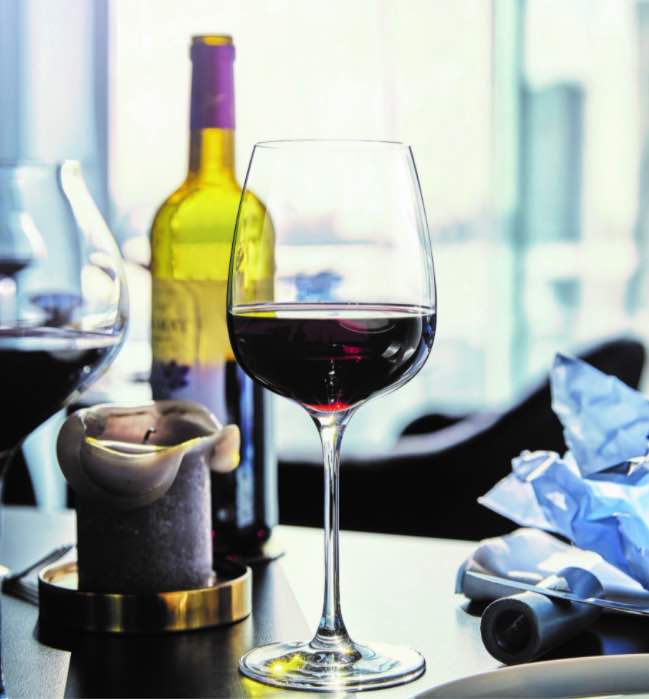FAMILY DINING LOOKS FOR TRANSFORMATION AFTER 2020’S STRUGGLES
The sector’s biggest players indulged in considerable reinvention attempts as they felt the loss of breakfast and particular challenges at off-premise.
Few of the all-day concepts enjoyed a robust off-premise business at the time, and sheltering at home was particularly impactful for a sector known to have an older clientele, a cohort particularly vulnerable to the worst COVID-19 could do. Part of the reason Cracker Barrel Old Country Store replaced the rocking chairs on its porch with dining tables in 2020 was the expectation its senior fans would feel safer eating outdoors.
The sector was also dependent on the daypart most disrupted by the shutdown of workplaces and other manifestations of sheltering at home: breakfast. After years of trying to nudge up dinner and lunch sales, family-focused chains escalated that quest to a fight for survival.
“Sales growth had already been somewhat lackluster even prior to 2020—in 2019, family-style chain sales only increased by 1.8%,” said Kevin Schimpf, senior manager of industry research for Restaurant Business sister firm Technomic. “Overall sales for family dining chains within the Top 500 group dropped by 34% in 2020, a notably more severe decline than casual dining’s rate of -27%.
“Looking at the biggest players in the group, it was typical to see annual sales declines of around 30% or worse.”
Indeed, the drop-offs for the Top 10 family focused chains ranged from a high of 46%, for Bob Evans, to 24% for First Watch.
Under those do-or-die financial pressures, family chains had no choice but to accelerate their reinvention. “We had to really to be our own disruptors,” Lance Trenary, CEO of Golden Corral, told RB in an interview earlier this year. “We immediately went to work on what we called ‘now innovation.’”
For Golden Corral, that meant exploring alternatives to a buffet, the highly successful brand’s signature. It had already been experimenting with traditional table service. That effort accelerated, with servers duplicating the concept’s promise of unlimited portions by bringing seated customers as many plates of specified food as they wanted.
It also had employees dishing out food from the buffet as if the restaurants were cafeterias.
Across the segment, to-go business became the lifeline every brand focused on grabbing. But as sit-down concepts specializing in food that usually never traveled farther than from kitchen to table, considerable re-engineering was required.
IHOP—family dining’s largest operation by sales, according to Technomic’s annual Top 500 ranking—had already invested in a new generation of packaging to enhance the portability of items like pancakes and egg platters. It upped its bid for more takeout and delivery by adding bowls and burritos, long the signatures of quick-service and fast-casual brands. The intention was to add products that travel better than two eggs over easy with a side of pancakes.
Family chains unabashedly raided the limited-service sector for ways of bolstering takeout and delivery sales. Golden Corral, which generated only 2.9% of its sales from off-premise orders pre-pandemic, is now experimenting with drive-thrus. Takeout stations have been created by setting up mini cafeteria lines where employees dish out items into disposables—a setup that sounds not dissimilar from the second make lines that Chipotle Mexican Grill uses.
IHOP announced in mid-May that will jump fully into the fast-casual market this summer with a spinoff concept called flip’d by IHOP. The concept was conceived as a takeout and delivery brand, with an emphasis on grab-and-go breakfast items such as coffee, fresh juices and egg sandwiches. Some stores will feature a pick-up lane like the ones used by Chipotle and Dunkin’, and others could incorporate a traditional drive-thru, according to IHOP President Jay Johns.
While the emphasis had been on the morning daypart, IHOP is now stressing that flip’d should also enjoy a healthy lunch and dinner business.
Not dissimilarly, Cracker Barrel has armed itself with a fast-casual venture called Maple Street Biscuit Co., which now extends to 37 locations. Same-store sales during the third quarter ended April 30 consistently exceed 2019 levels, and per-unit sales are currently running at an annualized rate of $1 million, according to Cracker Barrel CEO Sandra Cochran.
Top 500 family chains aren’t borrowing just from chains further down the service and pricing spectrum. Cracker Barrel and Golden Corral are both poking a swizzle stick into casual dining by adding alcoholic beverages, something the pair had traditionally resisted because of their focus on families.
Golden Corral is still guarding against the impression that it’s now a bar by only selling drinks as an accompaniment to food, and setting strict service limits.
Cracker Barrel recently projected that beer, wine and sangria will eventually generate about 2% of a unit’s sales. The alcoholic beverages are currently available at 405 of its 664 units. The number will jump to 600 restaurants before the year-end holidays, according to executives.
Fertile ground for virtual concepts
Many of family dining’s largest players are aiming to increase their off-premise and dinner business simultaneously by developing virtual concepts specializing in popular midday or nighttime items that travel well.
Denny’s recently completed the rollout of its first delivery-only venture, The Burger Den, and is currently introducing a second called The Meltdown, which specializes in grilled cheese sandwiches. The ventures were conceived as ways of boosting delivery sales in the evening and late at night, when the kitchen and staff may have some downtime. The objective is to complement Denny’s considerable a.m. business.
The Burger Den, currently in 1,100 of Denny’s 1,504 domestic stores, is generating weekly sales of about $900 per unit, according to executives.
It expects Meltdown to be embraced by roughly half the domestic system.
Cracker Barrel has just revealed that it is expanding a one-unit test of its brick-and-mortarless concept, Chicken and Biscuits, to 19 units. The menu is limited to chicken tenders, a few of Cracker Barrel’s most popular sides, and scratch-made biscuits—all items that could play well at lunch and dinner.
Golden Corral’s virtual entrant is Homeward, a specialist in such comfort foods as fried chicken; mac and cheese bowls; and braised-beef sandwiches.
Smaller restaurants
IHOP is sitting out the virtual-concept rush, at least currently, Johns said. He explains that his priority is re-starting IHOP’s expansion now that “normal” seems to be in view.
Toward that end, the brand is developing a smaller prototype, a quest shared by Golden Corral and many others in family dining. During the sector’s heyday, the restaurants were typically very large, with ample parking available to handle the steep surge in business on weekends.
The economics of that approach have been tempered by galloping labor, land and construction costs. The model is further undercut today by the amount of off-premise business that the big brands learned to capture during the pandemic.
A number of smaller, more regionalized family chains only eased their foot off the gas pedal in 2020, without halting development altogether. “First Watch, Snooze, Black Bear Diner, and Another Broken Egg Cafe all added to their store counts,” noted Technomic’s Schimpf.
“Over the last three years, Snooze has grown its store count by 20 locations while First Watch has added nearly 170 new locations,” he continued. “That certainly helps.”
But overall, he noted, the sector continued to shrink, raising questions about its long-term future.
“Outside of the noteworthy location closures of chains like Perkins and Friendly’s, big players IHOP and Denny’s have seen their store footprints contract as well,” said Schimpf. “As time goes on, it will be interesting to see what happens to the whitespace created by these closures. Will these holes be filled by independents? Growing regional chains? Or potentially no one at all?”
Bob Evans updated its numbers, resulting in a restatement within the chart accompanying this story of the chain’s 2020 sales, rank and percentage of change in sales.



